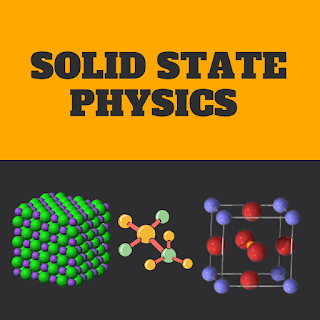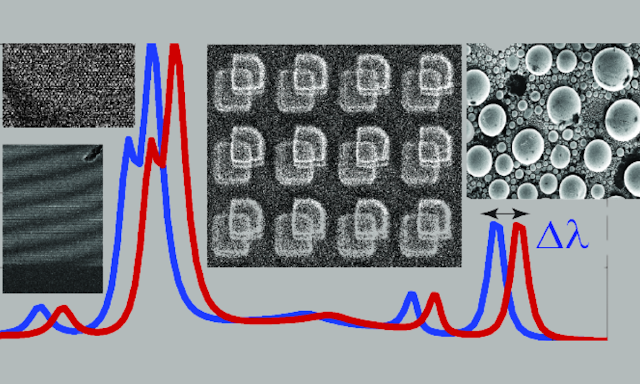Introduction to Solid-State Physics | Learn its Applications, Properties, and Significance
Delving into the study of physical properties in solid materials, such as crystals, semiconductors, and metals, solid-state physics focuses on the conversion of atomic-scale properties into macroscopic ones. This field hold great importance for scientific and engineering advancements in semiconductors, transistors, and various other materials.
 |
| Introduction to Solid-State Physics |
Introduction to Solid-State Physics:
Solid-state physics, also known as solid-material physics or solid-state metallurgy, draws upon concepts from crystallography, electromagnetism, metallurgy, and quantum mechanics. The primary objective of this discipline is to comprehend the behavior of matter in complex environments and how it manifests through various properties. It establishes a theoretical framework for materials science and finds practical applications in semiconductor and transistor engineering.
Solid state physics is an interdisciplinary field that combines materials science, electromagnetism, and quantum physics. Advanced methodologies are used to gain a better grasp of the complexities of solids.
History of Solid-State Physics:
The American Academy of Physics founded the Department of Solid-State Physics (DSSP) in 1940, emphasizing the importance of solid-state physics. The information obtained through studying superconductivity, semiconductors, and atomic structures, especially in Europe where German, English, and Soviet physics flourished, revolutionized the development and reputation of solid-state physics.
Condensed matter physics originated as a specialized specialty within solid-state physics during the Cold War, focused on the study of diverse states of matter such as solids, fluids, and plasmas. Solid-state physics is now regarded as a fundamental pillar of condensed matter physics.
Background of Solid-State Physics:
Solids are made up of densely packed groups of atoms that form strong bonds and so have mechanical, thermal, electrical, magnetic, and optical properties. The arrangement of atoms can be uniform and geometric (as seen in steel and ice) or random (as seen in window glass) depending on the materials and environment.
Because of their adaptability for mathematical modeling, crystals with periodic atomic order receive special attention in solid-state physics. Glass materials have favorable mechanical properties in general, including electrical conductivity, magnetism, optics, and mechanics.
Importance of Solid-State Physics:
Understanding the properties and behaviors of objects in the digital environment relies heavily on solid state physics. It provides information on the micro- and macro-scale characteristics of solids and other materials. Physics advancements have resulted in disruptive technologies such as transistors, semiconductors, and superconductors, which have a significant impact on our daily lives.
The principles of solid-state physics are useful in many branches of physics, including quantum mechanics, electricity, and thermodynamics. Scientists can learn about the underlying laws that govern life by examining the characteristics, interactions, thermodynamics, and electrical mechanics of atoms. This understanding allows for the development of materials with specialized qualities depending on atomic structure and organisation. Using solid-state physics concepts, for example, different types of window glass and stainless steel can be designed.
Applications of Solid-State Physics:
Solid-state physics has several practical applications in a wide range of industries. Understanding the behavior and properties of semiconductors, which are critical components in electronic devices such as computers and smartphones, is critical in this discipline. Designers and engineers can develop and optimize these electrical systems using solid state physics ideas.
Furthermore, solid-state physics helps to produce optical components such as fiber optics and lasers. Solid-state physics insights improve our understanding of optical behavior in these systems, improving optical engineering.
Solid physics research entails analyzing silicon chips and their properties, which are extensively utilized in memory systems. Solid-state physics contributes to driving silicon chip performance and reliability in a variety of applications by thoroughly analysing their behavior.
Magnetic resonance imaging (MRI) is a significant solid-state physics application, notably in complex biological and medical contexts. Solid-state physics researchers contribute to the progress of medical imaging technologies by understanding the properties of magnetic fields utilized in MRI scanners.
Solid-state physics is essentially the underpinning of modern technology. Even commonplace items such as refrigerator door magnets, window glass, and architectural elements rely on solid-state material principles.
Crystal Structure and Properties in Solid-State Physics:
A material's primary define is its crystalline appearance. Researchers can explore the detailed structures of crystals and atoms using techniques such as X-ray crystallography, neutron diffraction, and electron diffraction.
The size of individual crystals can vary based on their composition and growth. Highly crystalline materials are frequently composed of several tiny crystals that are found in everyday life.
Crystal structural defects and distortions must also be considered. These flaws have a substantial impact on material mechanical and electrical properties. Physicists learn about the behavior and attributes of real-world things by investigating these flaws.
Solid-state physics is the study of numerous phenomena such as electrical conductivity and heat capacity. It explains electrical and heat transfer, for example, using models such as the Druid model and the Hall effect in metals. These models, while significantly overestimating the electron potential, assume the presence of positively charged particles and inert electrons.
The Significance of Solid-State Physics:
Solid-state physics has significant and practical consequences in many industries. It has played a critical role in the design and development of critical electrical components in modern technology. Solid state physics governs the operation of components in computers, mobile phones, televisions, and other electronic devices, such as memory chips, integrated circuits, microprocessors, transistors, and diodes.
Solid-state physics is significantly used in the semiconductor field. Understanding semiconductor electronic band structures, doping mechanisms, and quantum phenomena enables researchers and engineers to enhance current semiconductor devices and integrated circuits.
The use of light in electrical devices provides enormous benefits, with photovoltaics' complicated physical features playing a key role. Light-emitting diodes (LEDs), laser diodes, photodetectors, optical fibers, and other cutting-edge technology have resulted from this domain of physics. These advances are used in lighting, displays, and telecommunications.
The benefits of solid state resources created progressive technological developments and revolutionized our way of life. Solid state resources are essential in technological growth and the well-known progression of our life, from mobile phones and computers to durable electronics and medical devices.
Condensed Matter Physics:
Condensed matter physics, one of the most numerous topic of study in physics, investigates matter and its properties at both the macroscopic and microscopic levels. It studies memory-type materials using a variety of methodologies, including quantum mechanics, computational mechanics, and field theory.
Condensed matter physicists study the effect of physics on matter by studying how matter is produced when numerous atoms and electrons interact. Using proven rules of microphysics to predict the structural features of enormous systems is a critical part of condensed matter theory.
There are two types of condensed matter physics: hard condensed matter physics and soft condensed matter physics. Hard condensed matter physics studies the quantum properties of computable materials, whereas soft condensed matter physics studies areas where quantum mechanics plays an important role.
Condensed Matter Physics and Solid-State Physics Difference:
While mathematical subfields and features are shared by condensed matter and solid state physics, they differ in some ways. The properties of solids, such as crystals, metals, and semiconductors, are often the subject of solid-state physics. Condensed matter physics, on the other hand, studies all materials, including solids, liquids, and plasmas.
A matter that has been condensed Physics is at the forefront of improving our understanding of matter's behavior and properties under varied settings. Its broad scope and adaptability make it a necessary field in physics.
Conclusion:
Solid-state physics examines the organization of individual atoms as well as their collective behavior in solids. The physical features of well-structured atomic complexes have a significant impact on their behavior. The principles of solid-state physics are used in electrical and optical devices, as well as magnetic devices and other modern technologies. We can harness the potential of complex materials and create technological achievements in a variety of domains by harnessing insights from solid state physics, which will encourage development across all scientific disciplines.






0 Comments